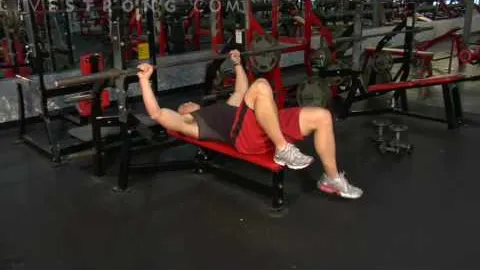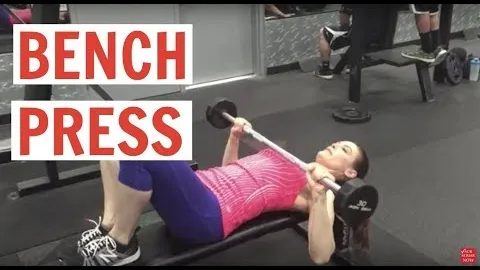

The flat bench press is a popular and effective exercise that targets the muscles in the upper body, particularly the chest, shoulders, and triceps. It is a compound movement that involves pushing weight away from your body while lying on a flat bench. This exercise is commonly performed using a barbell, but it can also be done with dumbbells or a Smith machine.
In this article, we will explore the benefits of the flat bench press exercise, provide step-by-step instructions on how to perform it correctly, and discuss some variations and tips to maximize your results. Whether you are a beginner or an experienced lifter, this guide will help you understand and optimize the flat bench press exercise.
Strengthens your chest muscles: The primary muscle group worked during the flat bench press is the pectoralis major, which is the main chest muscle. By performing this exercise regularly, you can increase both the size and strength of your chest muscles.
Builds upper body strength: In addition to the chest muscles, the flat bench press also engages other upper body muscles, including the shoulders, triceps, and even the biceps to some extent. This compound movement allows you to lift heavier weights and develop overall upper body strength.
Improves push movements: The flat bench press is a pushing movement that mimics actions like pushing a heavy door or lifting a heavy object off your chest. By strengthening the muscles involved in these push movements, you can improve your functional strength and daily life activities.
Increases bone density: Weight-bearing exercises like the flat bench press can help increase bone mineral density, reducing the risk of osteoporosis and benefiting overall bone health.
Boosts metabolism and burns calories: The flat bench press is a compound exercise that engages multiple muscle groups simultaneously. As a result, it increases your heart rate and burns calories more efficiently, aiding in weight management and overall fitness.
Set up the bench: Start by adjusting the flat bench to the appropriate height. The height should allow your feet to rest comfortably on the floor and provide a stable base. Lie flat on the bench with your head positioned correctly at the top end.
Grip the bar: Grab the barbell with an overhand grip slightly wider than shoulder-width apart. Make sure your grip is firm, and your wrists are straight to maintain stability and control throughout the movement.
Position the bar: With your arms fully extended, position the bar over your chest, just above your lower chest area. This starting position allows for a full range of motion during the exercise.
Lower the bar: Inhale and slowly lower the bar towards your chest. Maintain control as you lower the bar until it lightly touches your chest or just above it. Keep your elbows at a 45-degree angle to your body to engage the chest muscles effectively.
Press the bar: Exhale and push the bar back up to the starting position by fully extending your arms. Focus on contracting your chest muscles as you press the weight away from your body. Remember to keep your back flat on the bench throughout the movement to ensure proper form.
Repeat: Repeat the movement for the desired number of repetitions, maintaining control and proper form throughout. It is important to start with lighter weights and gradually increase the load as you become more comfortable and stronger with the exercise.
Dumbbell Flat Bench Press: This variation replaces the barbell with dumbbells, allowing for greater range of motion and unilateral training. It also helps improve muscular imbalances as each side of the body has to work independently.
Smith Machine Flat Bench Press: In this variation, the barbell is attached to a guided machine that provides stability and control during the movement. It is suitable for beginners or those with limited stability.
Incline and Decline Bench Press: These variations target different areas of the chest and engage the muscles at different angles. Incline bench press focuses more on the upper chest, while decline bench press targets the lower chest.
Warm up properly: Prior to performing the flat bench press or any other resistance exercise, it is crucial to warm up with light cardio and dynamic stretching. This prepares your muscles for the workout and reduces the risk of injury.
Use proper form: Maintain proper form throughout the exercise, ensuring that your back remains flat on the bench, your elbows are at a 45-degree angle, and your wrists are straight. Avoid bouncing the bar off your chest or using excessive momentum to lift the weight.
Progress gradually: Start with lighter weights and gradually increase the load as you get stronger and more comfortable with the exercise. This will help prevent injuries and ensure steady progress over time.
Incorporate other chest exercises: While the flat bench press is an excellent compound exercise, adding other chest exercises, such as dumbbell flyes or push-ups, can help target the muscles from different angles and provide a well-rounded chest training routine.
Listen to your body: Pay attention to how your body feels during and after the flat bench press exercise. If you experience any pain or discomfort, consult a qualified fitness professional to assess your technique or modify the exercise to suit your needs.
In conclusion, the flat bench press is a highly effective exercise for building upper body strength and developing chest muscles. By following the correct form, gradually increasing the load, and incorporating variations into your routine, you can optimize your results and achieve your fitness goals. Remember to always consult with a healthcare professional before starting any new exercise regimen.
If you're looking for a gym, fitness club or yoga studio, you've come to the right place.
You can find information about gyms in your area. Browse catalog of gyms and find gyms with classes which are you looking for.
On gym page you can find simple information like address, phone or website. You can find list of available classes. You can check availability of personal training or small group classes. On place page you can also see information about open hours.
You can find gyms near you with amenities, courts, studios and equipments.
Use our map to find gym at your city or district.
In Gym Navigator you can find list of exercises with movies for many body parts.
You can browse exercises catalog and find exercises the best of you.
You can also find exercises grouped into workout plans, which you can use to improve you body. Each routine show you exercises one by one and give you possibility to count you progress and count down rest time.